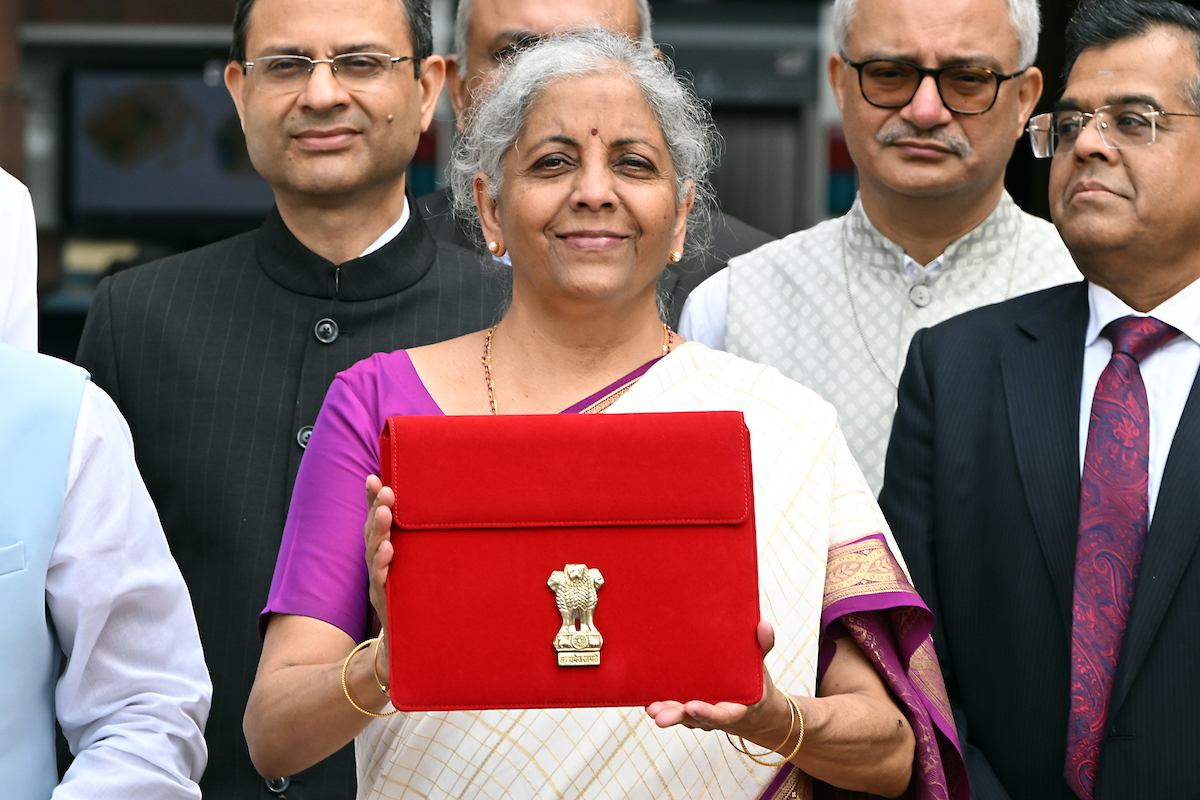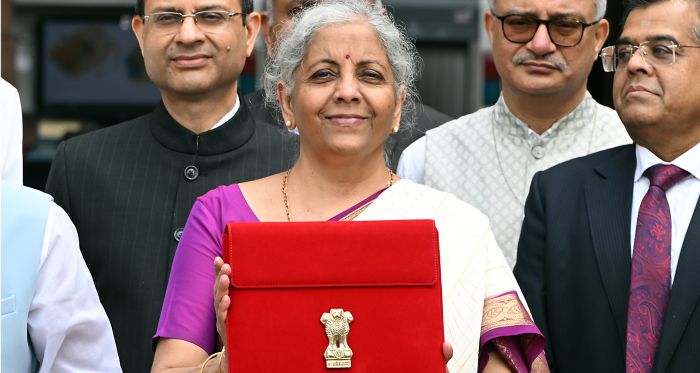Takeaway
Indian Prime Minister Narendra Modi’s first budget during his third term in office was presented to the country’s parliament by finance minister Nirmala Sitharaman on July 23. The budget, which estimates an expenditure of US$574 billion in 2024-25, saw Modi’s Bharatiya Janata Party-led coalition government navigate the complexities of alliance politics alongside concerns of youth unemployment.

The government, through the new budget, has prioritized employment and skilling, manufacturing, and investments in infrastructure development. By reducing corporate tax rates for foreign firms and easing rules for foreign investment, India is also aiming to position itself as a top destination for international capital. The budget aligns with the prime minister’s the goal of transforming India into a global manufacturing hub and a developed economy – that is, ‘Viksit Bharat,’ or ‘Developed India’ – by 2047.
In Brief
- India’s new budget highlights the government’s focus on employment and skilling. A recent government survey estimates that 49 per cent of university graduates in India are actually unemployable due to a lack of applicable skills.
- Schemes introduced through the budget’s new US$24-billion ‘Employment Linked Incentive’ provide cash incentives of up to US$178 for first-time entrants into formal sectors and support job creation in manufacturing, with incentives for both employees and employers. If successful, these new schemes could generate as many as 24 million jobs for young Indians within two years.
- The budget introduces several measures to improve India's investment climate, particularly for startups and foreign corporations, such as easing the rules for foreign direct investment, abolishing the ‘angel tax’ on startup investors, and lowering corporate taxes. However, the increase in capital gains taxes may dissuade some investors.
- The budget also supports the 'Make in India' initiative by reducing or eliminating customs duties on critical minerals and components for manufacturing mobile phones and bolsters sectors such as defence, telecommunications, and space.
- Infrastructure received a major boost, with US$132.3 billion (3.4 percent of GDP) allocated to capital expenditures, which includes developing ‘temple corridors’ to enhance religious tourism and improving all-weather road connectivity for 25,000 rural areas.
Implications
Effects on foreign investment are mixed
India’s fiscal deficit is targeted through the new budget to decrease to 4.9 per cent of GDP for the fiscal year 2024-25, down from the 5.1 per cent announced in February in the government’s stop-gap interim budget prior to the elections. This reduction is expected to positively impact interest rates and credit ratings and aims to boost investor confidence.
To raise India’s investment attractiveness, the budget also abolished the ‘angel tax,’ which had hindered the growth of startups during early funding stages. In addition, the two per cent equalization levy, a tax on digital and e-commerce services provided by foreign companies, has been removed. Lowering the corporate tax rate for foreign companies, from 40 to 35 per cent, is another measure likely to attract foreign capital.
However, the budget also introduces some tax increases that may deter foreign investors. For example, the capital gains tax on compulsory convertible debentures (CCDs) has more than tripled, from 10 to 35 per cent. CCDs are bonds that must be converted into equity later; when investors sell their shares, they will now have to pay higher taxes on their profits. Short-term capital gains will now be taxed at 20 per cent, up from 15 per cent, and long-term gains at 12.5 per cent, up from 10 per cent.
Manufacturing sector gets a bump
The budget reflects the pivotal role the manufacturing sector will need to play in transforming India into a developed economy. The budget includes investments in infrastructure and incentives to boost growth and generate employment in this sector. For instance, an expansion of industrial parks and corridors will bolster supply chains and reduce the logistics costs for manufacturing.
Aligned with the government’s existing ‘Make in India’ vision, the budget includes a strategic reduction of customs duties to encourage domestic manufacturing and promote India’s export competitiveness. For instance, the basic customs duty on critical mobile phone components has been reduced from 20 to 15 per cent, which will allow smartphone manufacturers to slash prices. Such measures will also enable India to leverage the de-risking strategies pursued by global companies looking to diversify their manufacturing bases away from China. India is rapidly emerging as a favourite manufacturing destination for such companies.
The budget also exempted 25 critical minerals – including cobalt, lithium, and copper – from customs duties, a measure expected to reduce domestic production costs for lithium-based batteries for consumer electronic devices and the electric vehicle manufacturing ecosystem.
What’s Next
- Prospects for Canada-India critical minerals trade looking brighter
Canada is a global player in at least three of the 25 critical minerals now exempted from India’s basic customs duty – copper, cobalt, and nickel. In 2022, Canada exported around two per cent of its total mineral exports to India, valued at US$2.2 million. Forty-two per cent of these mineral exports to India were critical minerals. This share may rise significantly given the revised duties in India’s new budget, possibly enhancing Canada's economic integration with India and strengthening global supply chains to mitigate China's dominance over supplies of critical minerals.
- Opportunities for Canadian pension funds in India
Canadian pension funds have invested heavily in Indian real estate, industrial transportation, and financial services, accounting for about 60 per cent of their total investments in India from 2008 to 2023. India’s new budget supports these sectors with initiatives for building 30 million houses and 12 new industrial parks. With the Canada-India Foreign Investment Promotion and Protection Agreement negotiations still pending, private investors and civil society organizations must collaborate in driving these opportunities forward.
• Edited by Erin Williams, Senior Program Manager, and Vina Nadjibulla, Vice-President Research & Strategy, APF Canada.







